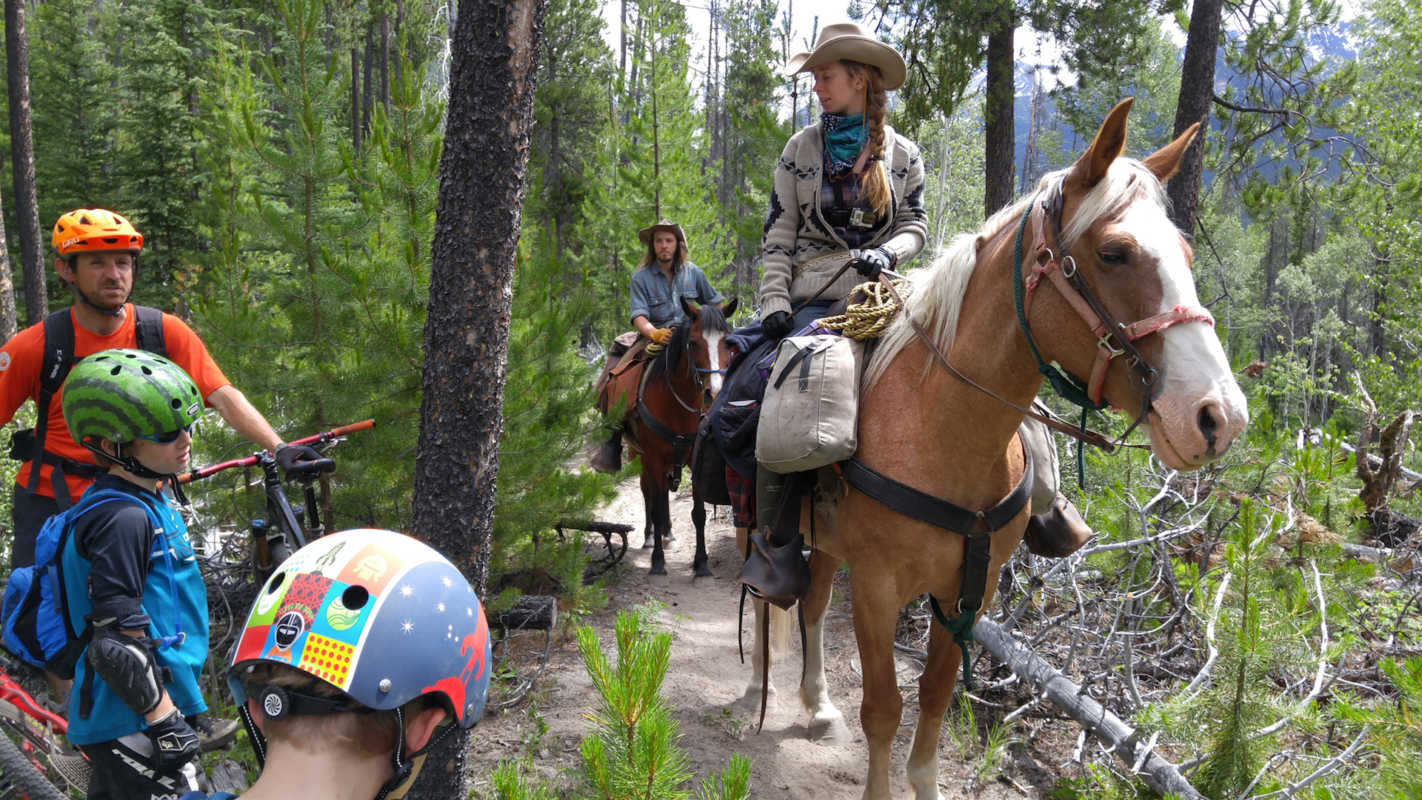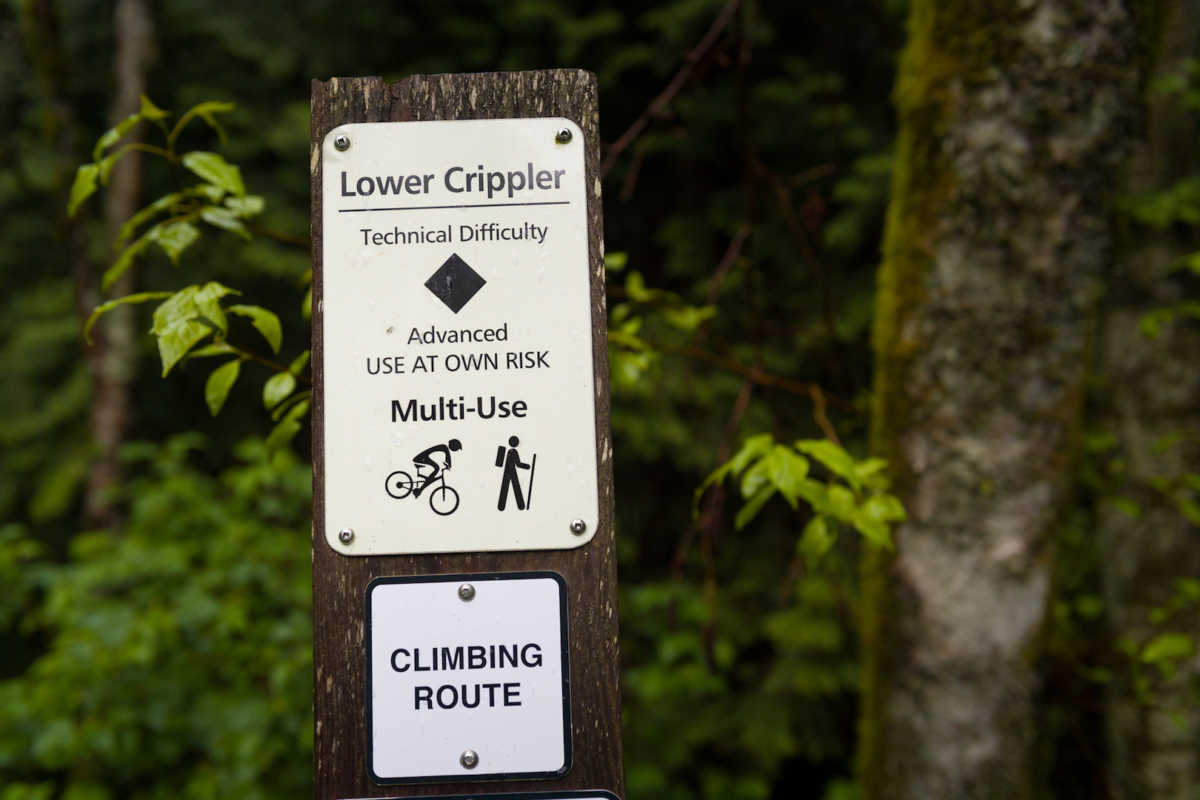Trail Etiquette
Words and Photos by Cécile Gambin
I’m not a preacher; but, sometimes we need a reminder on how to behave to ensure the trails we love remain accessible. If we all stick to the same rules, much like an ant colony, than we have a system that works. And if that system works than we should, in theory, be happy mountain bikers.
It’s a simple concept. Be courteous and respectful to your fellow riders and other trail users. This is even more important as our trails get busier. And trust me they are.
I consider it my social responsibility to play by the rules so that I am not a detriment to my sport. In fact, we should all be good ambassadors. Smile, be happy, work hard, educate and be considerate. Keeping the trails in tip-top shape and doing your part will help the longevity of the sport. Nobody likes a rider that can potentially harm mountain biking; so please, don’t be a dickweed.

The International Mountain Biking Association (IMBA) has developed the following ‘Rules of the Trail’ to promote responsible conduct on shared-use trails. Learn them:
- Ride Open Trails: Respect trail and road closures. Ask the appropriate land manager for clarification if you are uncertain about the status of a trail. Do not trespass on private land. Obtain permits or other authorization as required. Be aware that bicycles are not permitted in areas protected as state or federal Wilderness. (note: Bicycle access restrictions apply in Provincial and National Parks as well as conservation areas in BC)
- Leave No Trace: Be sensitive to the dirt beneath you and the environment around you. Wet and muddy trails are more vulnerable to damage than dry ones. When the trail is soft, consider other riding options. This also means staying on existing trails and not creating new ones. Don’t cut switchbacks. Don’t ride around standing water which results in widening the trail. Be sure to pack out at least as much as you pack in. Consider improving the trail experience for those that follow by picking up and removing any litter.
- Control Your Bicycle: Inattention for even a moment could put yourself and others at risk. Obey all bicycle speed regulations and recommendations, and ride within your limits. Social conflicts on trails often result when riders are going too fast.
- Yield Appropriately: Do your utmost to let your fellow trail users know you’re coming — a friendly greeting or bell ring are good methods. Try to anticipate other trail users as you ride around corners. Mountain bikers should yield to other non-motorized trail users, unless the trail is clearly signed for bike-only travel. Bicyclists traveling downhill should yield to all users headed uphill, unless the trail is clearly signed for one-way or downhill-only traffic. In general, strive to make each pass a safe, controlled and courteous one.

5. Never Scare Animals: Animals such as horses are easily startled by an unannounced approach, a sudden movement or a loud noise. Give animals enough room and time to adjust to you. When passing horses, dismount from your bike, walk around them on the downhill side of the trail, use special care and follow directions from the horseback riders (ask if uncertain). Running cattle and disturbing wildlife are serious offenses.
6. Plan Ahead: Know your equipment, your ability and the area in which you are riding and prepare accordingly. Strive to be self-sufficient: keep your equipment in good repair and carry necessary supplies for changes in weather or other conditions. Always wear a helmet and appropriate safety gear.

Here are some more helpful tips for yielding on trails:
Bikers vs Hikers – in general bikers yield to hikers on shared trails. If a biker is working hard up a tough multi-purpose uphill, the hiker should yield. On a bike-only trail hikers should yield and bikers should educate the hiker nicely. HOWEVER, a biker should never expect a hiker to yield.
Bikers vs Horses – playing chicken with a 1500lb animal is not wise. Stop, pull over, and talk to the horse and rider. Horses are prey animals and thus can be skittish. You want them to recognize you as a person not as a predator. Give the horse some distance before you continue your trek.
Bikers vs Bikers – uphill traffic gets the right of way on a two-way trail. Yes, that means sometimes getting a buzz kill having to stop for uphill traffic but, safety first. If you can’t handle this than ride a downhill-only trail or start competing at races.
Bikers vs Vehicles – Unlike a horse that can be easily spooked, a vehicle is manned by a person and they should yield to bikers.
The rules are all very self-explanatory and communication is at the heart. As mentioned, it is our responsibility as mountain bikers to ride in control, and pass accordingly when it is safe. Be courteous, and above all, have fun. And please, Strava is not an excuse to ignore the above.
